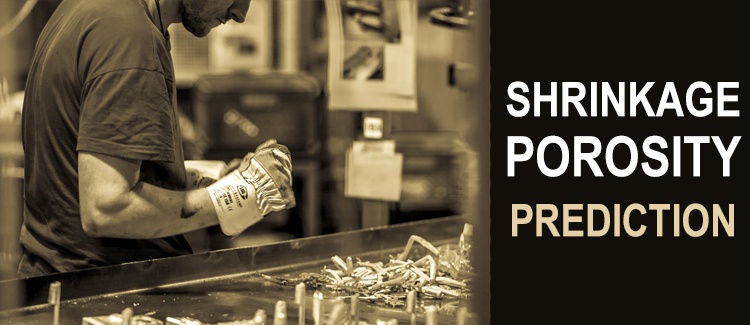As winner of numerous international awards, Bruschi Spa is known for its innovative approach in design and technology. We are glad to share our insights and experiences with the industry members.
Die casting simulation for shrinkage porosity prediction
To predict shrinkage porosity and other defects, simulation is increasingly used nowadays, as these software require less development cost and time than experiments. Only some specific simulation programs, however, take into consideration the effect of back pressure in the cavity in die-casting. In this article we are going to discuss: what is shrinkage porosity, causes of the defect and how to avoid it with simulation.

In zinc alloy a faster casting method has been developed, which makes it possible to produce castings with specific features, suitable for the manufacturing of automotive parts, large and small household appliances components and hydrothermal systems.
In die casting processes, the mould filling phase is highly critical because defects such as air entrapment and shrinkage porosity might occur. In the mould, gas is compressed by the melt being poured and discharged outside through the vent. Choosing the proper die casting method is the best way to avoid such defects due to pressure and air entrapment.
The fundamental cause of shrinkage porosity has to do with the solidification phase: let’s dive into the meaning of that particular defect, possible causes and solutions.
What is shrinkage porosity
The term porosity is generally used to describe cavities produced within a solidified casting, due to specific volume contraction on solidification. Usually the ragged edged cavities are associated with the last areas to solidify in contrast to the smooth rounded voids resulting from gas porosity.
Identifying cavities size, shape, surface constituents, location and frequency is crucial to define the exact defect occurring and to determine its cause. On the one hand, some defects can be fixed during the manufacturing process, on the other hand, by changing the mould design you can prevent them avoiding extra works and costs.
For a customer knowing the factors that are going to contribute to the various defects means to be able to co-design with the casting supplier to avoid production problems.
Causes of the defect
In HPDC processes, when the liquid melt is injected into the die cavity, it flows through ingates at high speeds. When the mould cavity is completely filled, melted metal is maintained in pressure by stroke: in this condition the solidification phase begins. Cast material takes up less space when solid than when liquid and this space will appear where there is a hot spot in the casting. The shrinkage is as high as wall thickness is heavy. The causes of this defect are different wall thickness, cross section too thick, metal pressure too low, gate too thin for maintenance pressure.
To avoid frequent casting rejection the solidification process must be examined very carefully: gates and runner geometry, cooling channels, thermal cycle and pressure in the cavity are the areas object of the simulation analysis.
If the shrinkage porosity is small in diameter and limited to the very centre of thick sections it won’t cause massive problems. However, if it is larger in size, or joined together, it can severely weaken a casting. In the worst case porosity appear to the surface and impair the aesthetical quality.
How to avoid defects with simulation
The general technique for eliminating shrinkage porosity is to ensure that liquid metal under pressure continues to flow into the voids as they form. Engineers use computer simulation to have an analysis instrument for casting solidification study. This can be achieved by careful attention to the gating system, the cooling system, the die layout and the heat flow paths in the die.
In high pressure die casting process, castings and moulds geometry design, as well as casting parameters, gating and cooling systems, die layout and the heat flow paths can be optimized by using simulation programs. Data resulting from them are very valuable information for investigate the problem and make a diagnosis as well as in die design and process parameter optimization as they simulate casting solidification and predict hot spots.
HPDC simulation benefits are shared by customers and die casters, as the number of rejected products can be significantly reduced, leading to shortened delivery times, improved quality and indirect cost-reduction (less material waste and no need for empirical tests or trials).
In the computer simulation it is possible to identify shape and location of porosities and to predict air entrapment by tracking its flow.
An accurate solidification analysis can predict the occurrence, location and size of internal defects.
Using die casting simulation programs for shrinkage porosity prediction can lead to significant costs reduction thanks to major improvements in material and energy consumption, labour resources, and scraps reduction.
If you are using simulations to design or improve your die casting moulds and processes, please share your experience with us writing a comment here below.
To get updates on trends and innovations in the Zinc Die Casting industry, you are welcome to subscribe to our blog.

